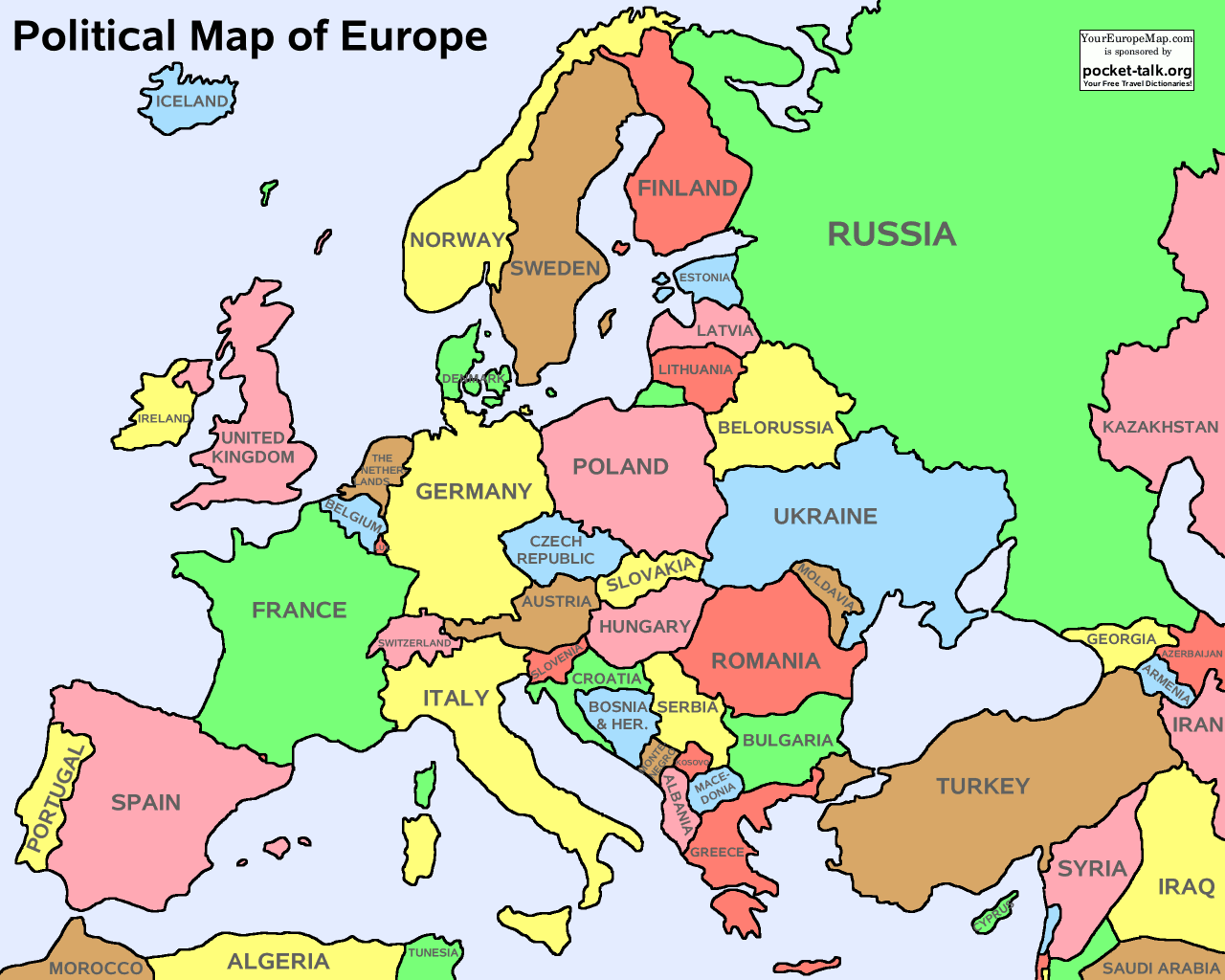Geographical location
Ukraine is situated in the central part of Eastern Europe, on the crossroads of major transportation routes from Europe to Asia and from the Scandinavian states to the Mediterranean region.
Most of Ukraine is located south-west of the Eastern European plain. Mountains occupy only 5% of Ukrainian territory: the Ukrainian Carpathian mountains in the west and the Crimean mountains in the south. The highest peak in Ukraine, Goverla Mountain (2,061 m), is situated in the Carpathians. Roman-Kosh peak (1,545 m) is the highest mountain in Crimea.
The Ukraine’s Black Sea coastline exceeds 1,500 km. Sea coasts in Ukraine are mainly flat, except for the region near the Crimean mountains. Water temperature at the seaside ranges from 0-8oC in winter to 25oC in summer.
The Azov Sea’s shore is low-lying, straight, with specific sand spits. The Azov Sea is rather shallow. Sea water near shore freezes in the winter. The water temperature in summer reaches 25-30oC.
There are more than 73,000 rivers in Ukraine. Ukrainian rivers mostly belong to the basins of the Black and Azov seas. Only the Western Bug and other right influxes of the Vistula River flow to the Baltic Sea basin. The largest rivers in Ukraine (Dnepr and Danube rivers) are navigable.
More than 20,000 water reservoirs are situated in Ukraine, including more than 3,000 lakes. They are mostly situated in Polesye, Prichernomorskaya lowland, and the Crimean steppe.

Climate
The climate of Ukraine is temperate continental. The only exception is the southern coast of Crimea, where the climate is subtropical of the Mediterranean type. Warm low-snow winters and rainy summers are specific to the mild climate of the Zakarpatye region.
Average winter temperatures in Ukraine vary from -8 to -12oC. The temperature in the southern regions approaches 0oC (32 oF).
The average summer temperature ranges from 18 to 25oC (64.4 oF to 77oF). However, it can exceed 35 oC (95 oF) during the day.
Frequent weather fronts bring weather changes. Note, however, that clear, sunny weather is typical for Ukraine (up to 230 sunny days per year).
Precipitation falls unevenly across Ukraine. The most rainfall is recorded in the Crimean mountains and the Ukrainian Carpathian mountains.
The southern coast of Crimea is the warmest place in Ukraine. The summer temperature here reaches 39oC, while the average temperature in January is 4oC. Relative air humidity is 65-80%.
Natural resources
Ukraine possesses considerable volumes of natural resources. Analysts estimate that one quarter of the world’s black soil reserves are located in Ukraine. The country’s black soil is deemed the best in the world because of its physical, chemical, agrochemical, and mineralogical properties. The total area of black soil is 60.4 mn ha including 69% of agricultural lands. 78% of this is ploughed land.
The Constitution of Ukraine, adopted in 1996, defined land as a core national wealth that is specifically protected by the state.
Ukraine is one of the richest countries in the world by variety and deposits of mineral raw stock. It occupies 0.4% of the dry land and possesses 5% of the world natural resources, worth over USD 11 ths. bn.
Industrial extraction of coal is mainly done in Donbass region. The total area of the coal basin amounts to 60,000 sq. km, and its reserves are estimated at 109 bn tons.
Oil and natural gas are concentrated in Pridneprovskiy-Donetsk (80%) and the Prichernomorskiy-Crimean oil and gas bearing regions. Oil and gas deposits on the continental shelf of Ukraine in the Black and Azov seas are also deemed ripe for development. Ukraine satisfies its oil and 25% of its gas needs.
Iron ores are located in Krivoy Rog (18.7 bn tons), Kremenchug (4.5 bn tons), Belozerskiy (2.5 bn tons) and Kerchenskiy iron ore basins. The world’s largest deposits of manganese ores are located in Nikopol district. Deposits of nickel, chrome, titanium, complex and mercury ores (the second largest deposit in the world) are estimated as sufficient for commercial exploitation.
Ukraine is a European and world leader by number of mineral rock deposits. Deposits of ozokerites and brimstones are the largest in the world. Its deposits of graphite are the most important in Europe. The extraction of rock and potassium salt has been conducted in Ukraine for a long time.
There are open deposits of precious and semiprecious stones on the territory of the state as well (beryl, amethyst, amber, jasper, rock crystal, etc.). More than 15 deposits of gold have been discovered over the last several years.
Mineral and raw stock in Ukraine has a significant economic potential that is necessary for securing further national economic development, in particular, in metallurgy, chemical industry, as well as the production of ceramic articles and construction materials.
Flora and fauna
Approximately 30,000 species of plants grow in Ukraine. More than 400 of them are included in the Red Data Book. Almost 19 mn ha (nearly one third of Ukraine’s territory) has natural vegetation. Approximately half of all ordinary and almost 30% of all rare and endangered species are concentrated in the Crimean and Carpathian mountains.
Fourteen percent of Ukraine’s territory is covered with forests. More than half of the total timber reserve in Ukraine is in conifers: pine tree, fir, and silver fir. Forests in Ukraine are rich in berries, mushrooms, fruits of wild-growing plants, as well as herbs (about 250 species of herbs are recognized by official medicine).
Fauna in Ukraine is diverse and numbers almost 45,000 species. The rarest surviving animals are found in numerous conservation areas. There are a lot of fish species in the Black and Azov seas, as well as in rivers and lakes.
Eleven natural national parks, four biosphere conservation areas, sixteen wilderness areas, and a lot of dendroparks have been created in Ukraine.
Hunting for elk, deer, wild boar, hare, fox, wild goose, etc. is organized in reserve and hunting farms which exist in almost every region of Ukraine.
| 
